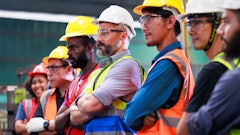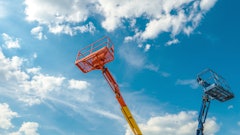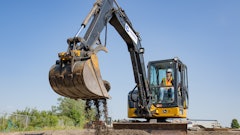
DOWNLOAD THE PDF *Save to your desktop for easy reading & reference
As the world becomes progressively digitized, the construction industry is following suit. Telematics allows construction work to be more efficient and productive, making it highly valuable in the rental industry.
Telematics Functions
Telematics technology provides real-time data while also allowing access to the data history of the rented equipment. Using telematics helps rental companies keep track of their fleet usage and status. In addition to keeping track of fleets, rental companies can avoid theft, loss of resources and loss of time.
What to Know Before Picking a System
When rental companies pick a system for their company, they should look for one that suits their fleet as a whole. While end users might not be integrating every asset at once, this consideration will make adding more to the system much easier down the line.
Dave Swan, senior vice president of products at Trackunit, recommends not getting caught up in making everything go together flawlessly.
The value of getting workers at rental companies connected to the fleet data right away is more important than trying to get every piece to run together. Once the data is being provided, end users can start building their telematics systems, adding new systems and features as needed.
“You’re going to be discovering the opportunity space as you start executing it, and because of that, it’s important to just go,” Swan continues. “Pick three things with concrete outcomes and work to make those happen.”
The most important thing for rental houses to do when getting started is to dive right into these systems and learn what options are out there and which types of technology would be most valuable for their company.”
Rental companies may even want to think about whether the service provider they pick will be able to grow with their company or if they might need multiple providers.
How to Best Onboard a System
Swan suggests that when rental companies decide to start onboarding a telematics system, they should keep in mind what they want to gain. Holding a goal at the forefront will help the decision-making process run more smoothly.
Tony Nicoletti, director of sales and business development at DPL America, notes that, sometimes, companies get stuck in the mindset that more is better, but when companies are just starting out, the large amounts of data being flushed through the pipeline might do more harm than good. The quantity of data provided when using large amounts of telematics functions can be overwhelming and just get in the way. So, starting small might be optimal for most companies, particularly those who are brand new to this technology.
“(The) best result is often to begin with simpler data capture and then move toward more complex over time,” Nicoletti advises.
Swan explains that keeping things simple at first is what helps companies learn and better understand the technology they are using before getting more advanced.
When integrating the systems, rental houses will want to have their team members try it out and receive feedback from them.
“(Testing) is a critical stage as many questions or concerns that were never considered come to light and must be addressed,” explains Nicoletti.
Telematics Should Be Part of Rental Companies
When it comes down to it, telematics is a great option for rental companies to optimize their productivity, profits, organization and efficiency. Profits rise when resale values take the servicing and maintenance of each piece of equipment into consideration. It pays to stay up to date and on track.
Having a telematics system to store and send out data to rental teams and users will make the ins and outs of running rental houses more fluid and easier to manage. Telematics improves convenience, safety and asset protection just by having a digital log of each of an end user’s items.
The Benefits
Using telematics systems for rental companies provides lots of benefits for the fleet and for the company in general. Swan and Nicoletti lay out five benefits that come along with telematics technology.
1. Money and Time Savings
Having end users’ fleets equipped with telematics can save them money in many aspects.
“(With) scissor lifts, we've had evidence-based statistics that somewhere between 30 and 40 percent of all trouble calls on scissor lifts are related to the battery charging tendencies and [the] knowledge of operators and renters of that equipment of when the machine is ready to operate for a full day's duty cycle,” Swan says.
Swan notes that this type of trouble call is usually a huge waste for rental companies because they must send someone out to decipher the problem that is truly a user-error issue. Calls like this can be avoided by using a telematics system.
Telematics saves time and money by preventing having to send a worker out to solve trivial problems that could be fixed by quick instruction or the user looking at the system and pinpointing the exact issue themselves.
2. Theft Prevention
Many systems offer tracking options for equipment or machines that have been rented out. This makes theft a lot less plausible since it is much quicker for companies to prevent it with GPS features.
3. Maintenance
While equipment should always be actively checked for issues or upcoming maintenance needs, telematics makes the process more straightforward. Some systems offer a preventive maintenance feature to make detecting problems or routine checks easier.
4. Safety
By keeping machines up to standard, a safety aspect comes into play. Tracking the health of equipment allows companies to stop tools from going out and therefore, prevent possible danger to customers.
5. Efficiency
Having telematics for rental machines makes rental companies’ teams much more efficient. With all the data available in one place, there is the opportunity for many eyes to be on it at once. This means that desk staff, technicians, the account management teams, etc. can all see the status of machines. That makes it more accessible and allows questions to be answered much quicker and solutions to be made much more smoothly.
A telematics system can also improve the billing process due to the accessibility and simplicity of having everything in one place.
DOWNLOAD THE PDF *Save to your desktop for easy reading & reference


























